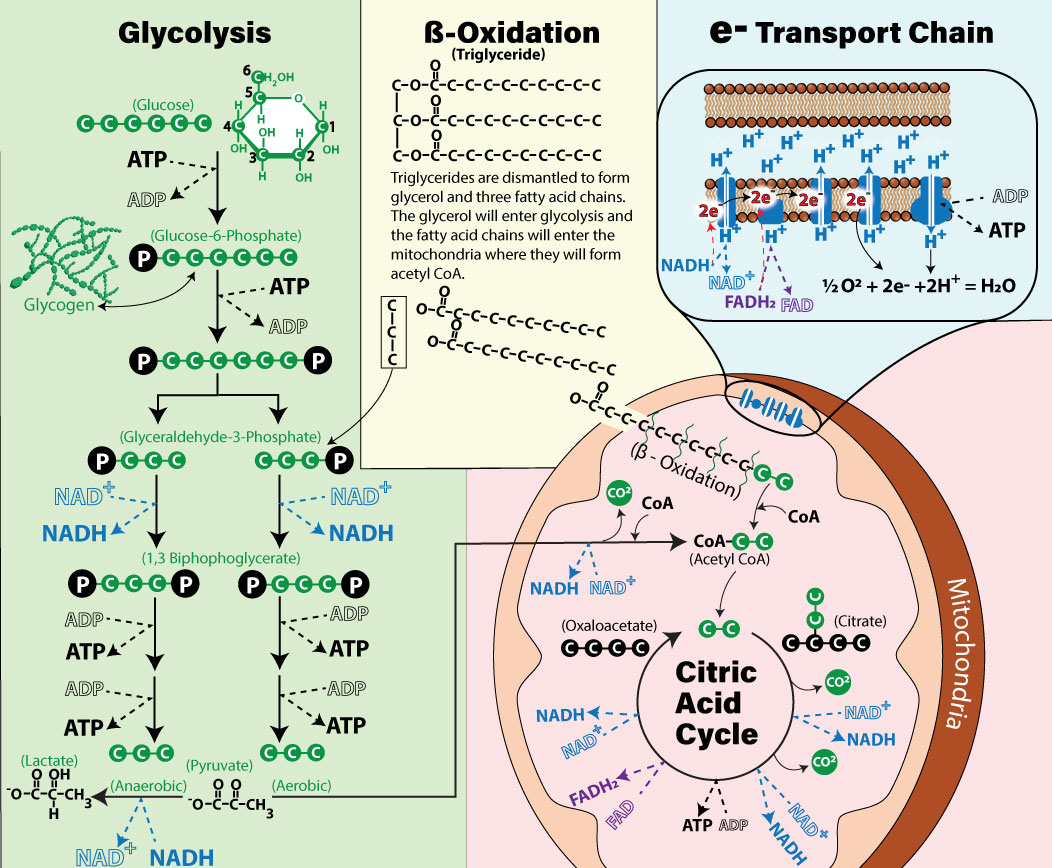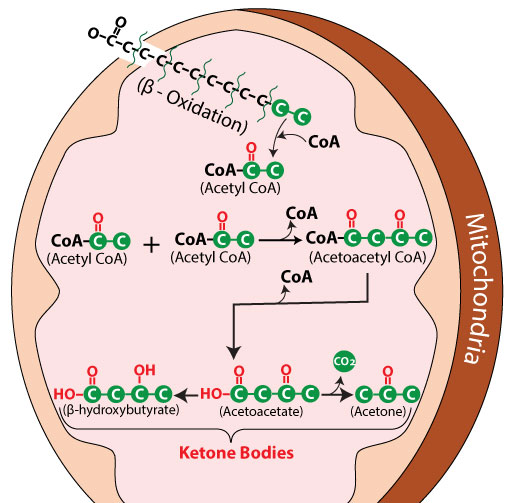Beta Oxidation

Lipids as an Energy Source
Just like glucose, lipids serve as a powerful fuel source, ultimately feeding into the production of acetyl CoA. This is shown in the yellow shaded area of the image above. While glucose rapidly produces acetyl CoA via glycolysis, lipids take a different route through a process called beta oxidation (Β-oxidation) . This pathway enables the breakdown of long fatty acid chains. Most of these fatty acid chains are removed from Triglycerides. These fatty acid chains yield multiple acetyl CoA molecules (an Acetyl CoA for every two carbons on the chain). All of these Acetyl CoA molecules can go through the citric acid cycle and yield NADH molecules as well as some ATP. The NADH molecules feed the electron transport chain and contribute significantly to ATP production. Fat, as a denser energy source, provides more ATP per gram than glucose because each triglyceride molecule can generate numerous acetyl CoA molecules, delivering a sustained energy supply under aerobic conditions.
Β-oxidation describes a series of reactions that break down fatty acids into 2-carbon acetyl groups, which are then bound to Coenzyme A to form acetyl CoA. Each time an acetyl CoA is generated, the remaining fatty acid re-enters the beta oxidation pathway to remove the next 2-carbon fragment. This process repeats until the entire fatty acid chain is broken down. Though not shown in the image above, the production of acetyl CoA from a fatty acid chain produces some NADH and FADH2. Furthermore, each acetyl CoA generated from Β-oxidation can enter the Citric Acid Cycle, where it produces 3 NADH, 1 FADH2, and 1 ATP. Since fatty acids often contain 16 to 20 carbons, a single triglyceride can yield many NADH and FADH2 molecules which can in turn contribute to the electron transport chain for ATP production. This makes fat a much more energy-dense fuel source than glucose.
Ketoacidosis
Ketoacidosis can occur when the body relies on mostly fat and very little glucose for energy. This is often due to excessive dieting, fasting, malnutrition, or, most commonly, Type I diabetes. With dieting, fasting or malnutrition, a person may simply not have enough glucose to enter the cells. In Type I diabetes, there is no insulin, so even if glucose is plentiful, it cannot enter the cell (Insulin is a hormone that permits glucose to enter fat and muscle cells. Fat and muscle cells make up the bulk of body tissue. Consequently, without insulin, these cells catabolize mostly fat for ATP production. As fat molecules break down through beta oxidation, acetyl CoA can accumulate when the Citric Acid Cycle reaches capacity. Excess acetyl CoA then combines to form ketone bodies called acetone, acetoacetate, and beta-hydroxybutyrate.

Recall the carbonyl and carboxyl groups from earlier in the semester..
 |  |